In 1989 I visited the Frans Hals exhibition at the Royal Academy in London. It was a life changing moment for me when I stood in front of Hals’ inexpressibly tender portrait of Isabella Coymans offering her husband, Stephanus, a rose which he is on the point of receiving in the companion portrait, reunited with hers for the exhibition.
Her features are alight with warmth and humour and the mutual trust that must have existed between them. That Hals could capture so much in a portrait was astonishing and the moment of her turning to her husband seems as fresh now as it was in the 17th century.
I hold Hals to blame for the subsequent travails I put myself through because I decided at that moment that I would attempt to become a portrait painter. Such was the effect of Hals’ genius that I brashly set forth on the quest ill-prepared for the sheer intensity of the work involved and it was many years before I could properly devote myself to the task with the single-mindedness required to get anywhere.
I wandered blissfully on through the exhibition from masterpiece to masterpiece. No kings, no empresses, no gods or Virgin Marys but a newly emancipated republic of people from wealthy merchant class characters such as the dandy, Jaspar Schade, whose family bemoaned the outrageous tailors’ bills he ran up, to fish-gutters and tavern drinkers including the wildly expressive portrait of Malle Babbe, seething with life and energy.
One of the most arresting qualities in the work was the way the portraits seemed turn the tables on you so that you became the one being observed and spoken to. The feeling of experiencing an encounter with another individual rather than being the hidden observer was uncanny.
Thank God, Hals took no notice of his teacher, Karel van Mander’s, injunction to his pupils not to become ‘mere face painters’ and deny us this wonderful record of his fellow countrymen.
Technique
For a painter, an encounter with Hals’ work is like an electric shock. No one else that I can think of of has painted like this either before or since. His absolute mastery of every aspect of the craft is allied to an economy of execution that seems to perfectly match the way our eye naturally takes the world in. This technique, which was entirely his own, serves a mind that penetrates to the heart of each of his characters and renders them in a wonderfully warm and sympathetic manner, imbued with a sense of life that dances through every one of the paintings.
The economy of rendition is a major reason for the impact that Hals work has when we look at the paintings. The portrait of little Catherina Hooft with her nurse is so perfect and done with so little work that the weave of the canvas beneath can be clearly seen and yet he has caught everything there is to say about this two year old, humorously comfortable in her secure little world. Maybe Hals created several versions of her expression and built the rest of the painting around the one he was satisfied with but, at any rate, it’s hard to imagine her keeping still for long so the technique involved is simply breathtaking.
The style may be economical yet many of the paintings are richly detailed and nothing is neglected. The white lace collars, in particular, are rendered in exquisite detail and demonstrate that, in paint handling, Hals was capable of anything.
Although Catherina Hooft’s dress is a dazzling pattern of orange embroidery the key colour in Hals’ paintings is, naturally, Calvinist black which he uses to enormous dramatic effect, framing the subjects, often with huge slouch hats, and offsetting the brilliant whites of their collars. Against this rich darkness colour becomes precious and intense and highlights have maximum effect.
The lovely Portrait of a Woman Holding a Fan in The National Gallery in London is an example of this richness of effect. The yellow ochre in the fan and her gold chains is taken up in the flesh tones of her hands especially, beautifully offset against her black dress, and the bold white of her left eye arrests our gaze, making us stop and pay attention to her. The lacing on her bodice is picked out in a way that shows the exact level of tension as it’s drawn together and yet it is all done in a way totally consistent with how our eyes would naturally take in detail.
Portrait of a Woman Holding a Fan
The lovely Portrait of a Woman Holding a Fan in The National Gallery in London is an example of this richness of effect. The yellow ochre in the fan and her gold chains is taken up in the flesh tones of her hands especially, beautifully offset against her black dress, and the bold white of her left eye arrests our gaze, making us stop and pay attention to her. The lacing on her bodice is picked out in a way that shows the exact level of tension as it’s drawn together and yet it is all done in a way totally consistent with how our eyes would naturally take in detail.
The Meagre Company (detail)
Portrait of a Woman Holding a Fan
This attention to detail is one of the greatest delights of Hals’ work, the more so as it is all so natural and unforced as a result of his creative exploitation of the paint. The civic guard portrait known as The Meagre Company in The Rijksmuseum contains a figure, the ensign on the extreme left hand side, that is simply stunning in this respect. Van Gogh declared himself ‘literally rooted to the spot’ when he saw it. Radiographs have revealed that Hals made no chalk drawing and used no dead colouring so the paint has been put on ‘alla prima’ and the effect is dazzling, the light seeming to dance all over the costume and flesh of the man.
Added to Hals’ incomparable draughtsmanship and sophisticated colouring it must be one of the greatest figures in all art.
Two years into the project, the patrons who commissioned the painting lost patience with Hals after much disagreement over whether Hals would travel to Amsterdam from Haarlem to complete the work and he claiming that they had agreed to come to Haarlem and that it was difficult to get them all together. He also said he had a bad leg.
They eventually gave the work to Peter Codde to finish. You can see at a glance that the figures to the left are by Hals’, that’s to say, the ensign and the group of six to the right of him. All the rest including the figure in the yellow coat with his back to us, are finished by Peter Codde. Hals’ characters are in intense, animated interaction but from there things seem to break down somewhat with the gentlemen standing around in isolation like shop dummies.
Codde was a gifted painter and he adapted his own style to make a decent job of the commission but it illustrates just what a unique man Hals was.
One small anecdote attached to the story is the fact that Peter Codde and his maid that he had been having an affair with were both thrown into the town hall jail in shackles for the offence. It led to the break up of his marriage and the notary who subsequently drew up an inventory of his effects was the same man responsible for issuing a legal writ on Frans Hals to compel him to finish work on the painting. The suggestion is that the connection might have led to Codde being given the job of finishing the work. It’s speculative, to say the least.
This attention to detail is one of the greatest delights of Hals’ work, the more so as it is all so natural and unforced as a result of his creative exploitation of the paint. The civic guard portrait known as The Meagre Company in The Rijksmuseum contains a figure, the ensign on the extreme left-hand side, that is simply stunning in this respect. Van Gogh declared himself ‘literally rooted to the spot’ when he saw it. Radiographs have revealed that Hals made no chalk drawing and used no dead colouring so the paint has been put on ‘alla prima’ and the effect is dazzling, the light seeming to dance all over the costume and flesh of the man.
Added to Hals’ incomparable draughtsmanship and sophisticated colouring it must be one of the greatest figures in all art.
Two years into the project, the patrons who commissioned the painting lost patience with Hals after much disagreement over whether Hals would travel to Amsterdam from Haarlem to complete the work and he claiming that they had agreed to come to Haarlem and that it was difficult to get them all together. He also said he had a bad leg.
They eventually gave the work to Peter Codde to finish. You can see at a glance that the figures to the left are by Hals’, that’s to say, the ensign and the group of six to the right of him. All the rest including the figure in the yellow coat with his back to us, are finished by Peter Codde. Hals’ characters are in intense, animated interaction but from there things seem to break down somewhat with the gentlemen standing around in isolation like shop dummies.
Codde was a gifted painter and he adapted his own style to make a decent job of the commission but it illustrates just what a unique man Hals was.
One small anecdote attached to the story is the fact that Peter Codde and his maid that he had been having an affair with were both thrown into the town hall jail in shackles for the offence. It led to the break-up of his marriage and the notary who subsequently drew up an inventory of his effects was the same man responsible for issuing a legal writ on Frans Hals to compel him to finish work on the painting. The suggestion is that the connection might have led to Codde being given the job of finishing the work. It’s speculative, to say the least.
The Meagre Company
Militia groups
The Meagre Company, so called because the members were considered remarkably thin for the type of personages they represented, was one of several large- scale civic commissions that Hals undertook. It’s in the Rijksmuseum but there are more to be seen at the Frans Hals Museum in Haarlem, all of them breath-taking tours de force.
They are a demonstration of Hals’ gifts on a very large scale. The sheer dynamism of the compositions, making use of great theatrical flags that direct the gaze and divide the picture space, make you realise what mastery he had over painting on a grand scale. The characterisation of each and every one of the figures, assembled in animated groups or listening to the conversation is perfect in every respect. Not one is denied a complete realisation of character and personality and he makes brilliant use of human gestures to direct the eye and take you on a mobile tour of the stage he has set.
On top of this, Hals’ introduces the viewer into the drama, as if you have just entered through a door, by making certain key figures turn to notice your presence in the company.
They are works of sublime genius.
Life
Hals was born in 1582 and died in 1666, aged 84. He was 5 years younger than Rubens, 17 years older than Van Dyke and 24 years older than Rembrandt and he outlived them all except Rembrandt who died 3 years after him.
His output was enormous and during his long working life it’s impossible to find a painting that is not a masterly piece of work. Fortunately, in the UK there are several examples to be found but, to my frustration, they are not always on display.
I made the trip to the Queen’s Gallery at Buckingham Palace to see the wonderful Portrait of a Man only to find that a themed exhibition was taking place and this incomperable masterpiece was not on show.
I redeemed my ticket and left muttering that The Louvre wouldn’t put The Mona Lisa in storage for a temporary exhibition. Da Vinci’s piece of sfumato may have cultural and historical significance and the charisma of fame but give me Hals’ man anytime.
It’s difficult to know where to stop in the appreciation of Hals’ portraits but some of my favourites are of the wives of wealthy burghers in their middle age such as Cornelia Claesdr Vooght, 1631, Portrait of an Elderly Lady, 1633, and Maritge Claesdr Vooght in 1639.
Late period
Hals’ late works are also masterpieces in the exploitation of paint. His broad style becomes looser but without losing any of his insight into the characters of his subjects. In fact, each brushstroke seems to carry ever more expressive meaning and the paintings, like Titian’s late works, are rich and mature with a command of technique developed over a lifetime.
The most notable works of Hals later years are the two group paintings, The Regents of the Old Men’s Almshouse and The Regentesses of the Old Men’s Almshouse. Both are in The Frans Hals Museum in Haarlem. Hals would have been about 82 when he painted them and he had lost none of his abilities and his powers of observation.
This detail from The Regents is an amazing study of two characters who look very much as if they’ve suffered strokes and the character on the left must rank as one of the most revealing portraits ever painted.
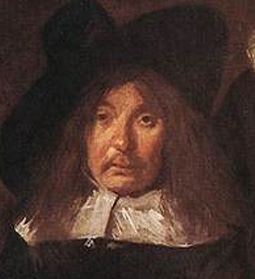
But the real star of these paintings must be this seated lady in the Regentesses. I imagine she was a pretty hard-bitten old dame when it came to handing out charity and yet Hals has managed to find a tender, almost girl-like quality in her features. I’ve often experienced the sensation, when painting older women, of seeing the young woman imposing her presence in the features. It’s an extraordinary thing.
Her hand, painted with breath-taking skill, is probably the highlight of the entire work.
Influences
Many painters have been deeply affected by Hals since the time of his rediscovery in the 19th century, especially among the realist school in France such as Gustave Courbet and Edward Manet. The Americans, Mary Cassat and Alden Weir made the pilgrimage to Haarlem, Weir exclaiming, ‘How to begin to describe this wonderful man of genius is more than I know…’
Whistler, as a dying man insisted on being taken to be among Hals’ portraits for one last time, tenderly running his fingers over the face of one of the women figures in a state of rapture. John Singer Seargent was another master painter deeply influenced by Hals and he made many brilliant copies including one of the Regentesses. His advice to students was, ‘Begin with Frans Hals, copy and study Frans Hals, after that go to Madrid and copy Velasquez. Leave Velasquez until you have got all you can get out of Frans Hals’.
But the most notable devotee of Hals was probably Vincent Van Gogh. Van Gogh made a long study of Hals’ portraits along with Rembrandt and other Dutch masters becoming deeply affected both in terms of Hals’ technique and his subject matter. He regarded Hals as ‘a colourist among colourists‘ and of his fluid and expressive brushwork he said, ‘What a joy it is to see such a Frans Hals, how different it is from those pictures – there are so many of them -where everything has been carefully smoothed down in the same way’. Most of all, he was affected by the subject matter: ‘Hammer into your head that master, Frans Hals, that painter of all kinds of portraits, of a whole gallant, live, immortal republic….I am just trying to make you see the great, simple thing: the painting of humanity, or rather of a whole republic, by the simple means of portraiture’. And of his own work, he said, ‘What impassions me most… is the portrait, the modern portrait’. I couldn’t agree more.
Himself
There is only one authentic self-portrait of Frans Hals which appears in his large militia painting, Officers and Seargents of the St George Civic Guard, of which he was a member. He appears inconspicuously looking out from behind the other figures at the back of the group on the far left hand side.
The Officers of The St George Militia Company in1649
There is the illustration of him in Houbraken’s, Life of Frans Hals, written years after Hals’ death and there is a copy by an unknown artist in The Clowes Fund Collection, supposedly of a self-portrait. In fact, there are other copies of this copy. I can’t bring myself to include it here since it’s such an abomination but it now seems to crop up on the net whenever Frans Hals is referenced which, to my mind, is tragic way for this artistic genius to be represented.
A further calumny is the false story that Hals was some kind of colourful drunkard and a wife-beater to boot. There is absolutely no documentary evidence for this but, of course, it makes good copy and stories like this die hard as we know from any study of the media. In fact, there was another Frans Hals in Haarlem at the time the legend refers to who was a known drunk and wife beater and who was hauled up before the authorities. Frans Hals, the painter, didn’t even have a wife at the time. But writers and journalists, like painters, have to get noticed and adorning the story with picaresque characters is usually a good idea.
Of course, for anyone engaged in this kind of work it is a laughable notion that a dissolute drunkard could produce this endless series of masterworks well into his eighties and can anyone seriously think that the painter of the tender and poignant Portrait of a Woman in The Hull City Museum was a man of gratuitous violence?
In spite of the lack of portraits of Hals himself, what is obvious is that, as a man, he had a wonderful sympathy for humanity. You will search in vain for melancholy or remorse, anger or fear in his works. He seems to have sought out all that is warm and spirited among us, and what a gift that is to leave to posterity.
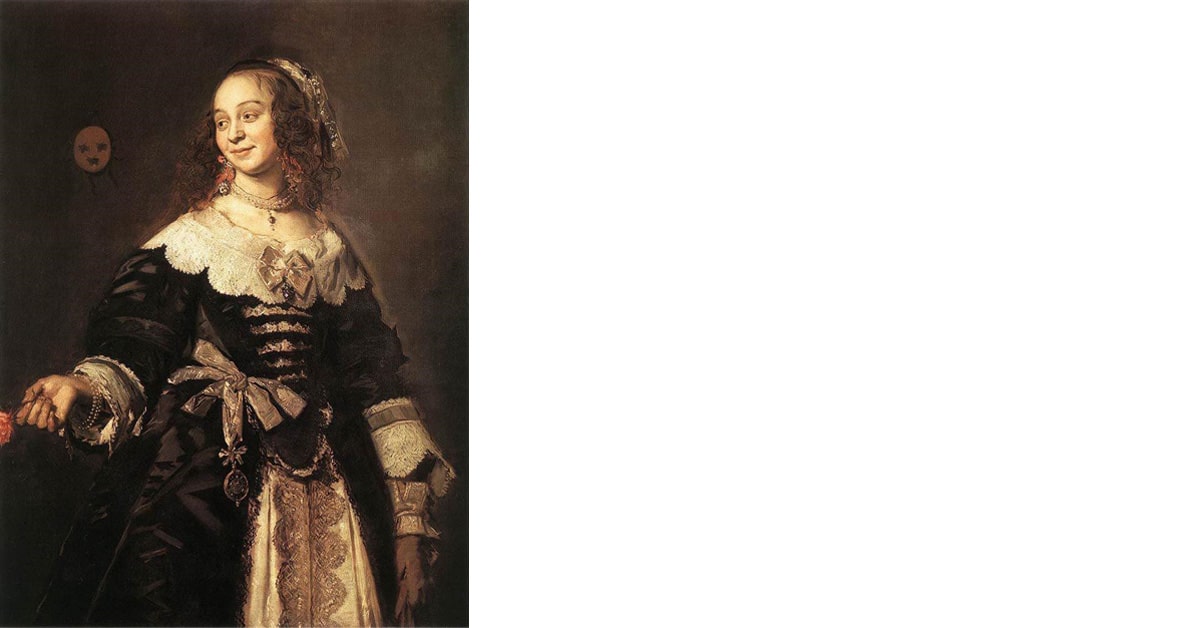
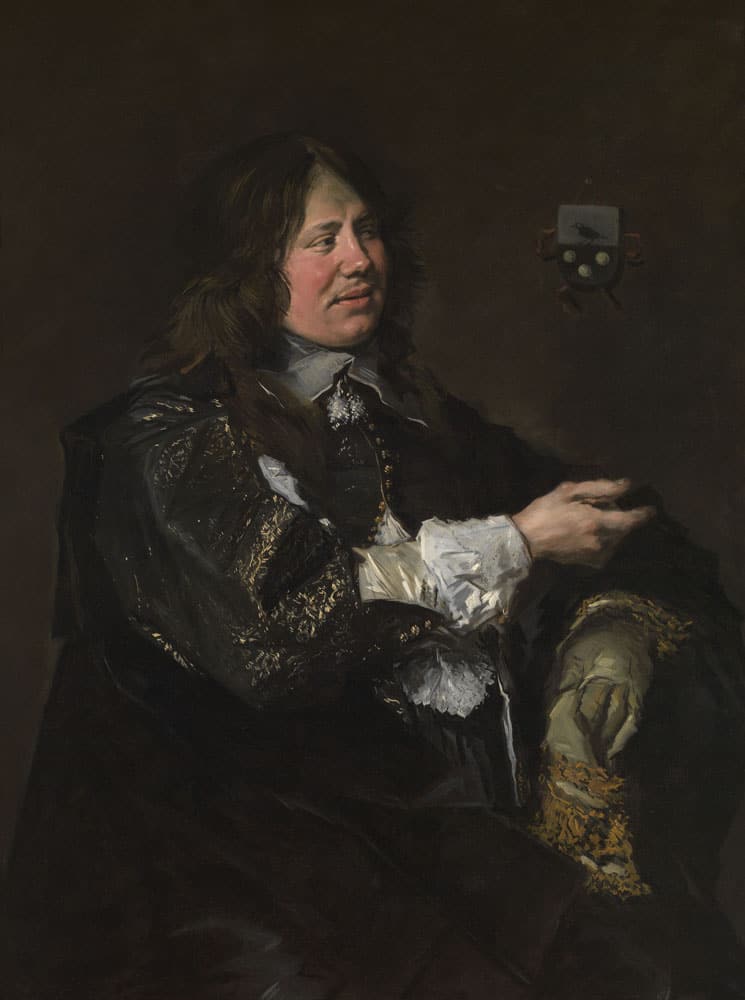
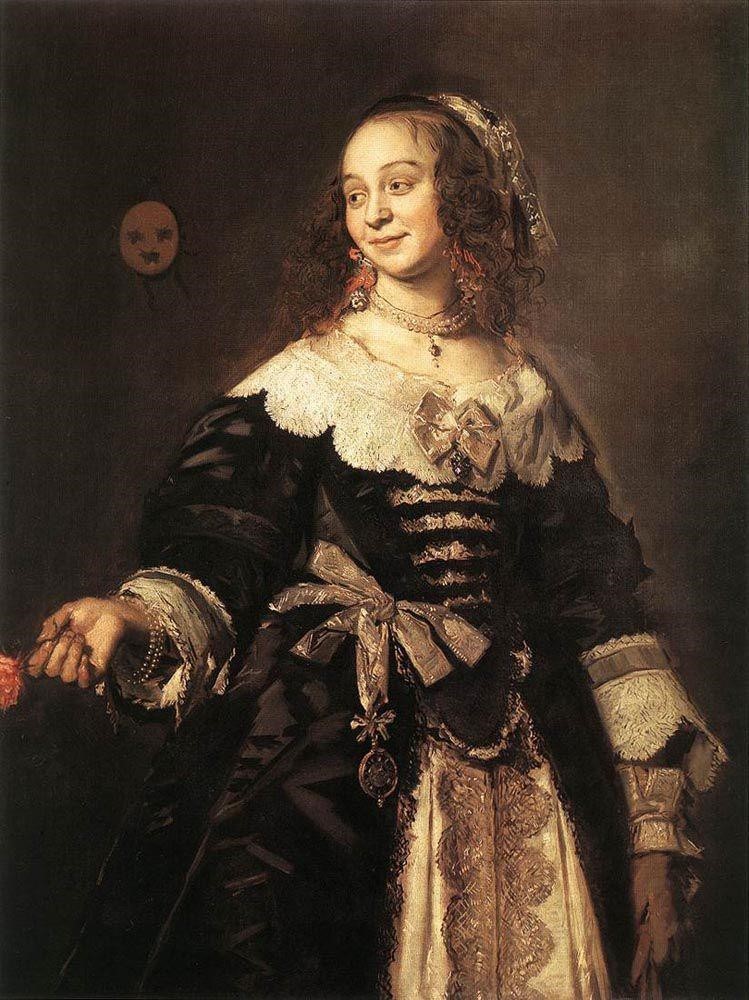
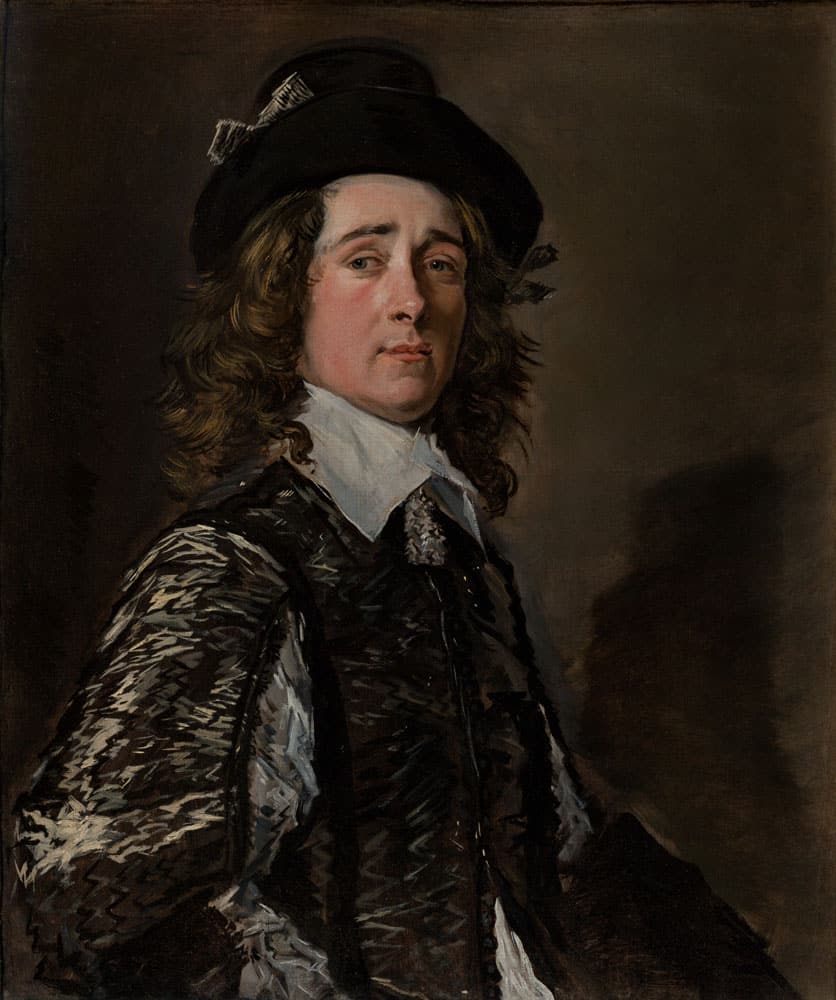
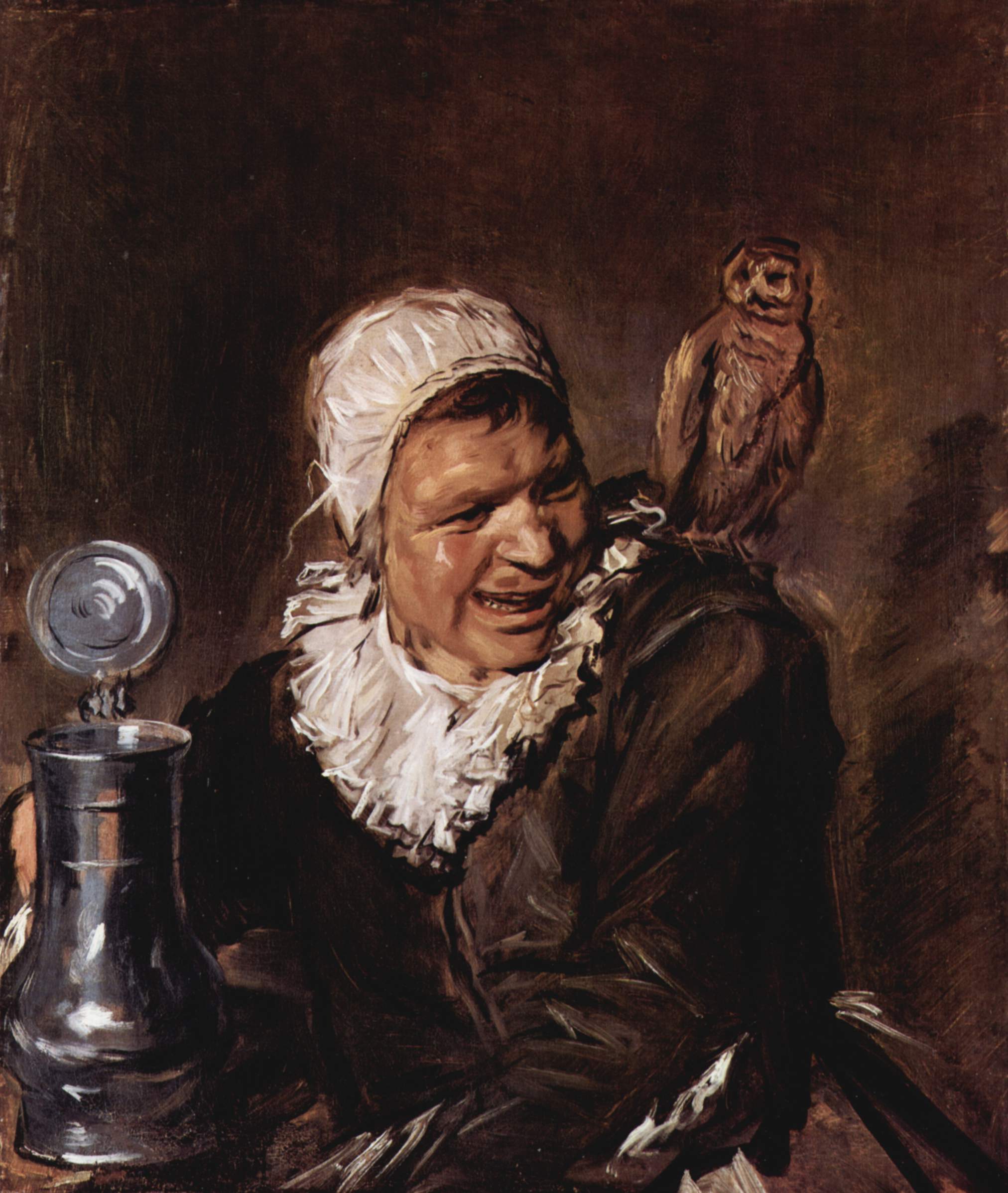
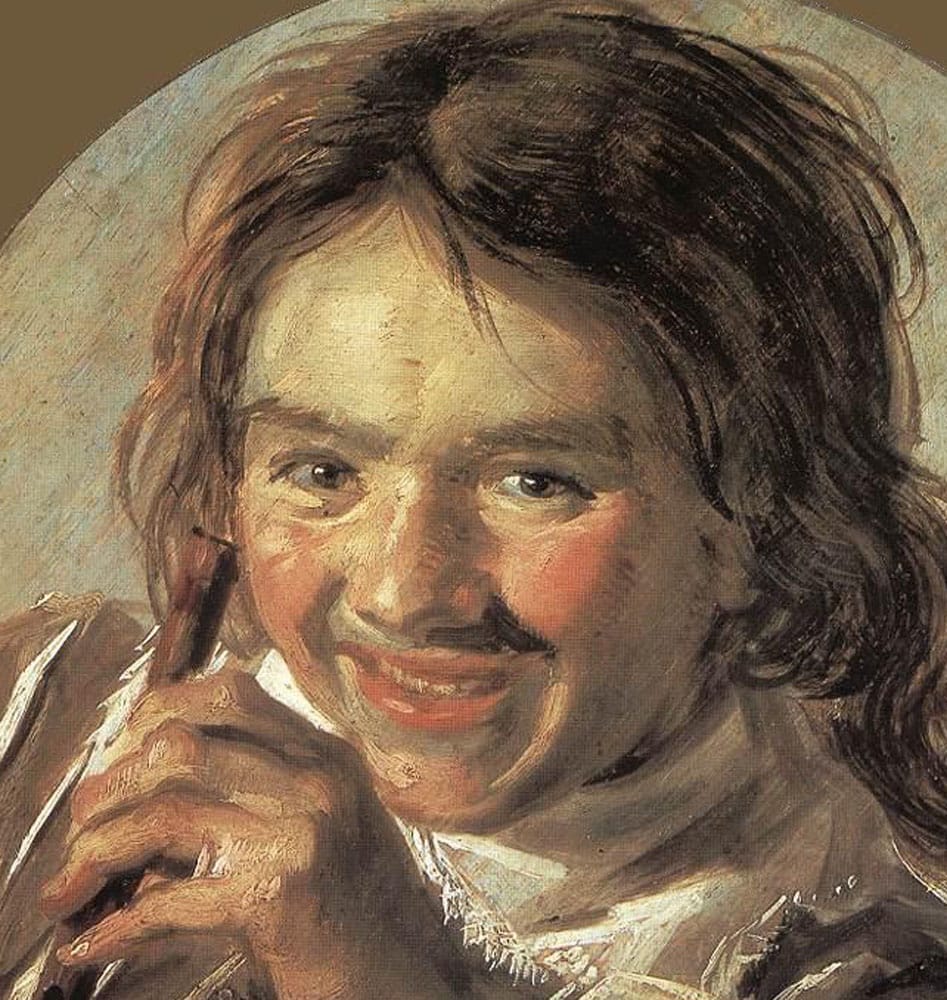
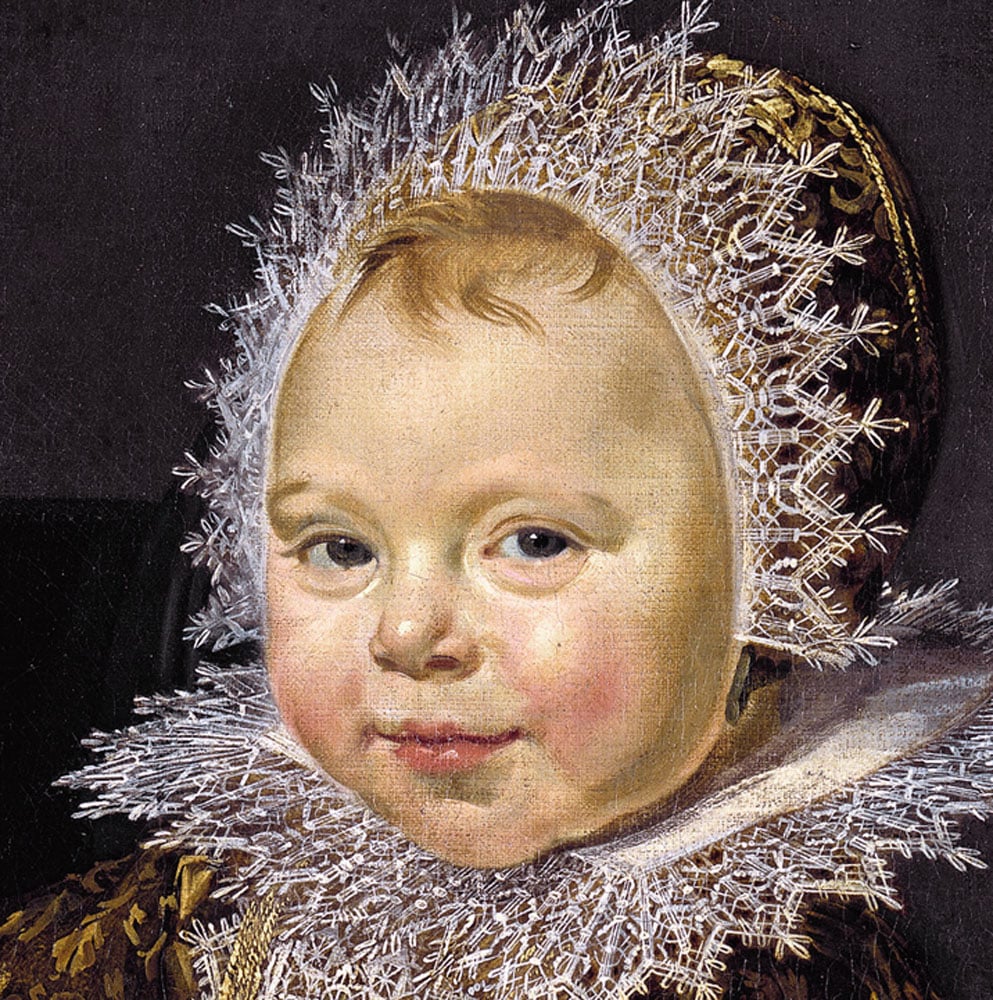
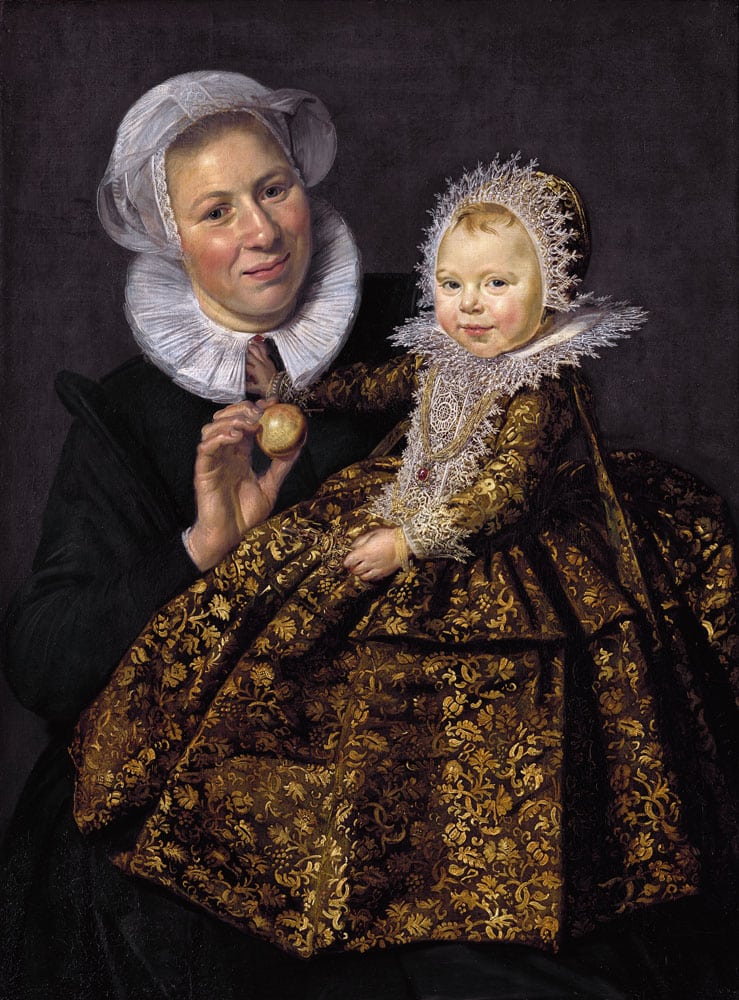
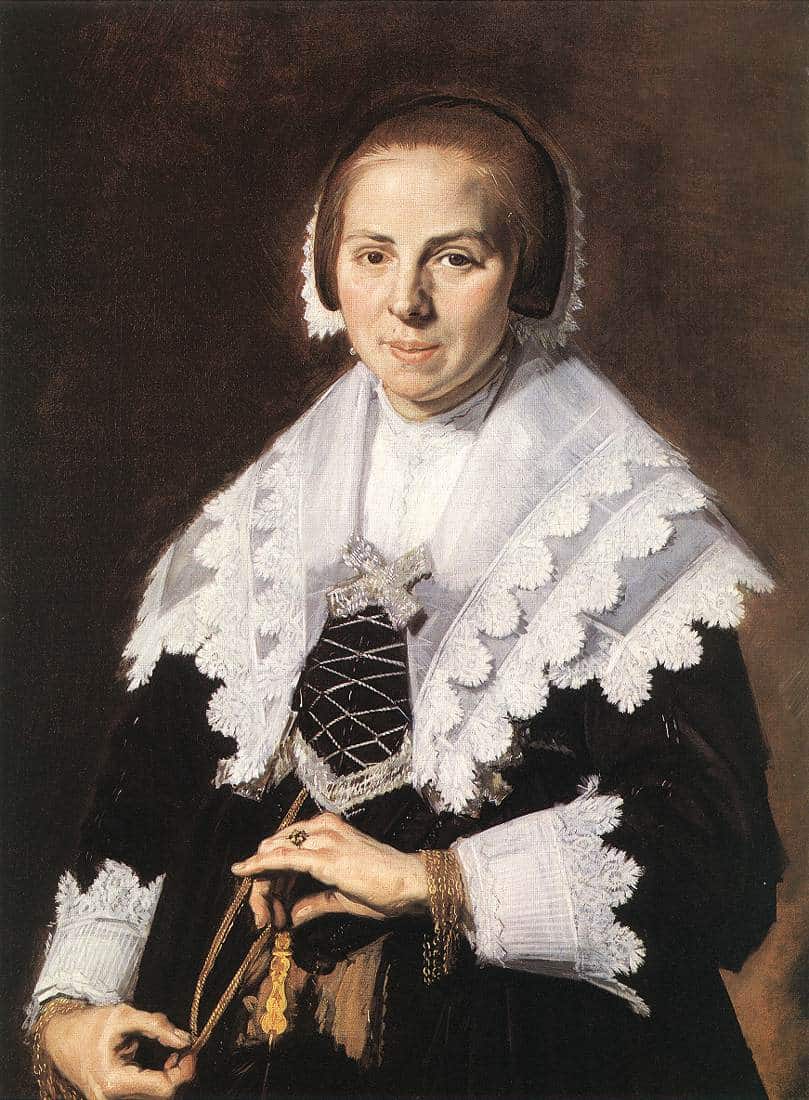
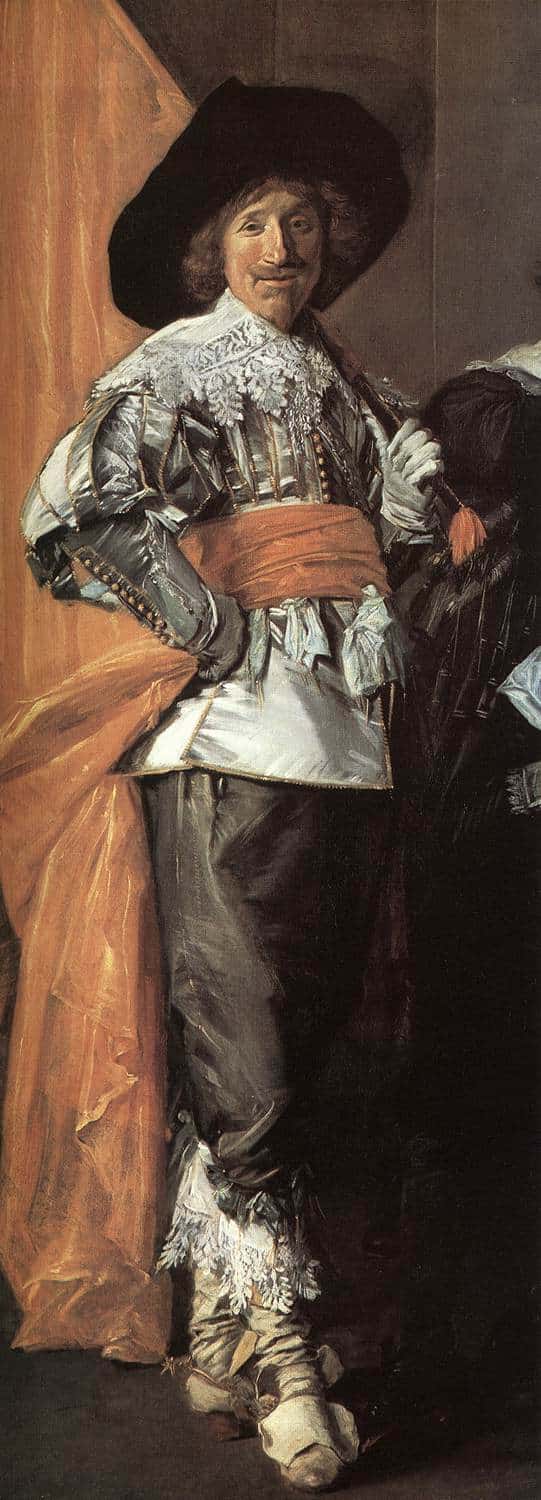
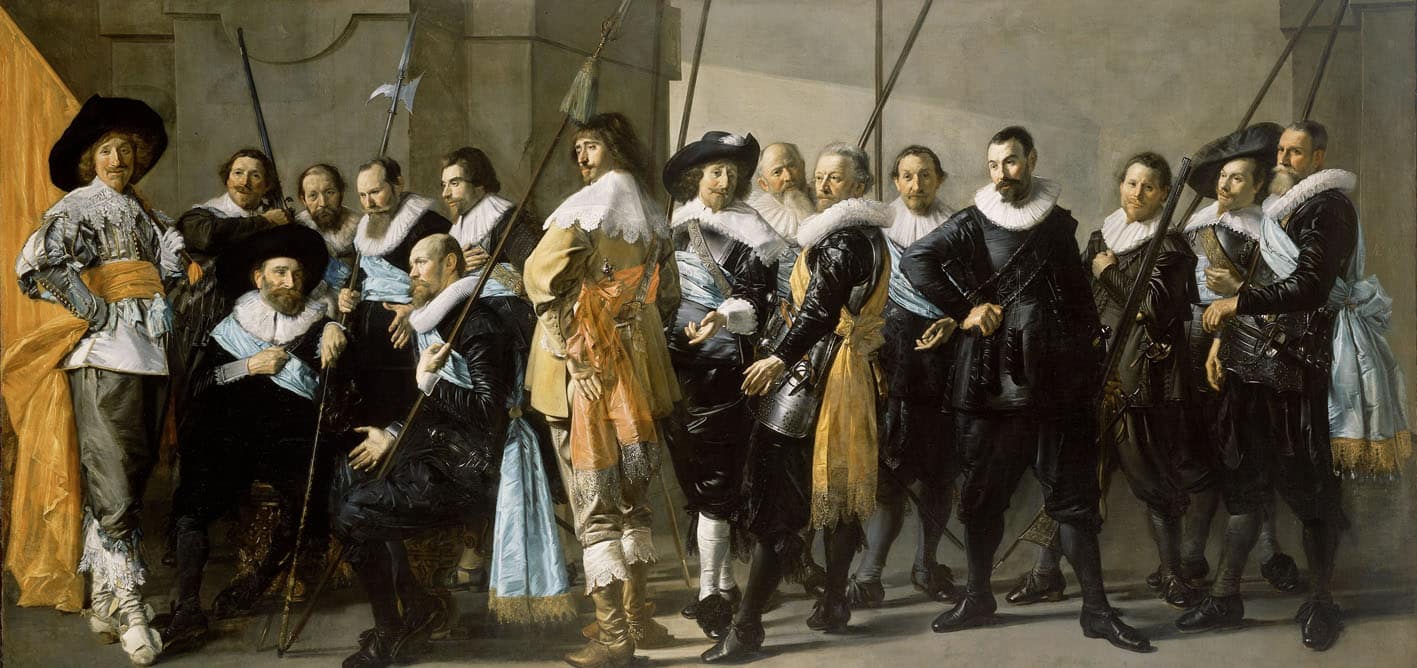
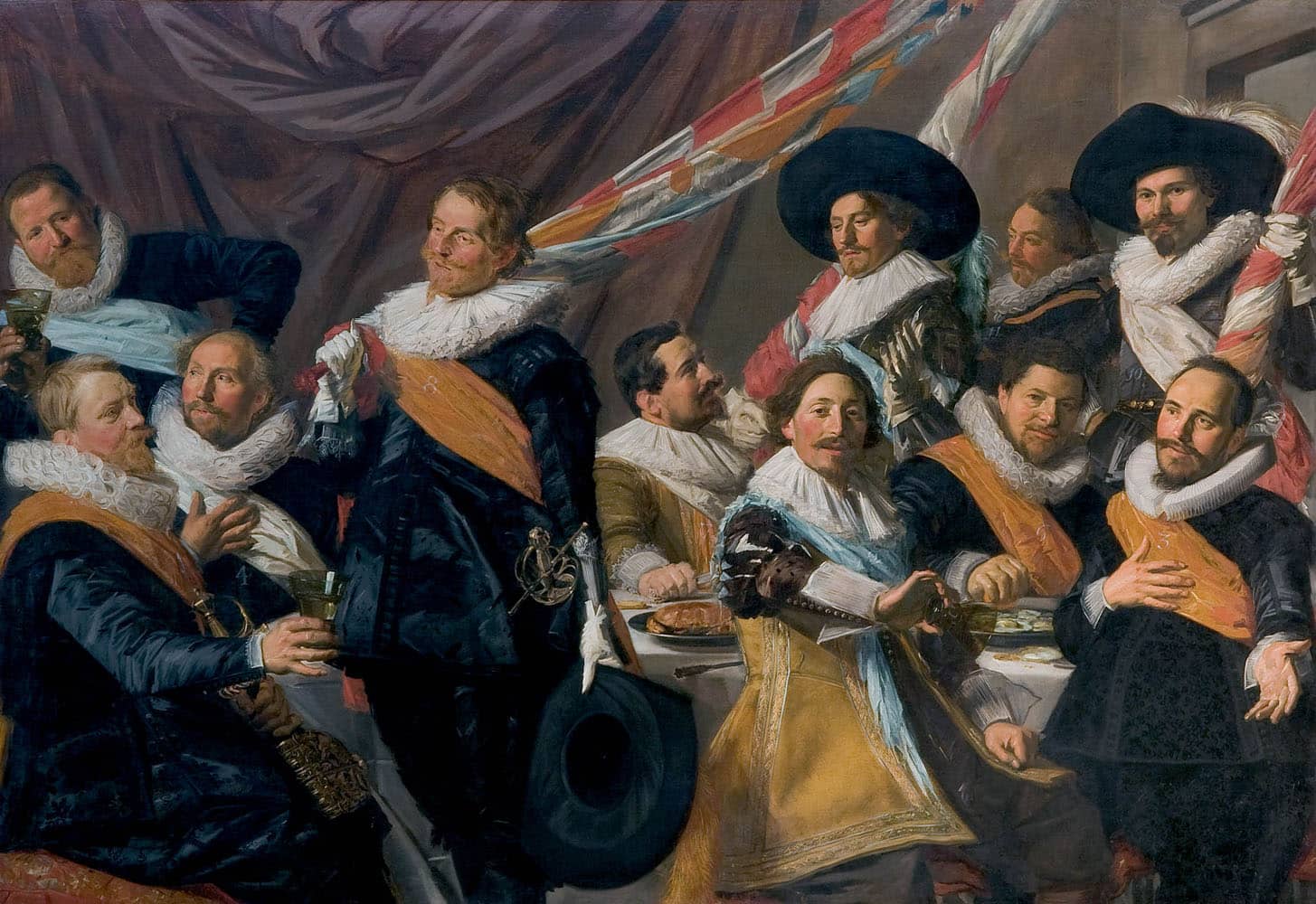
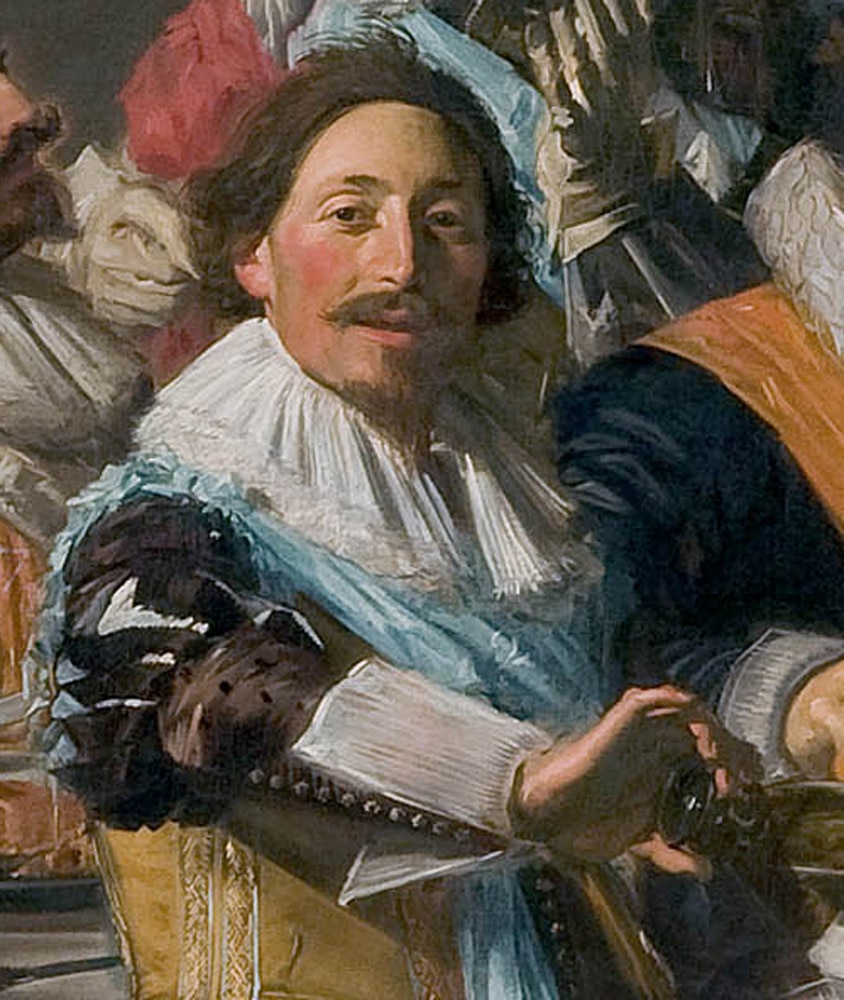
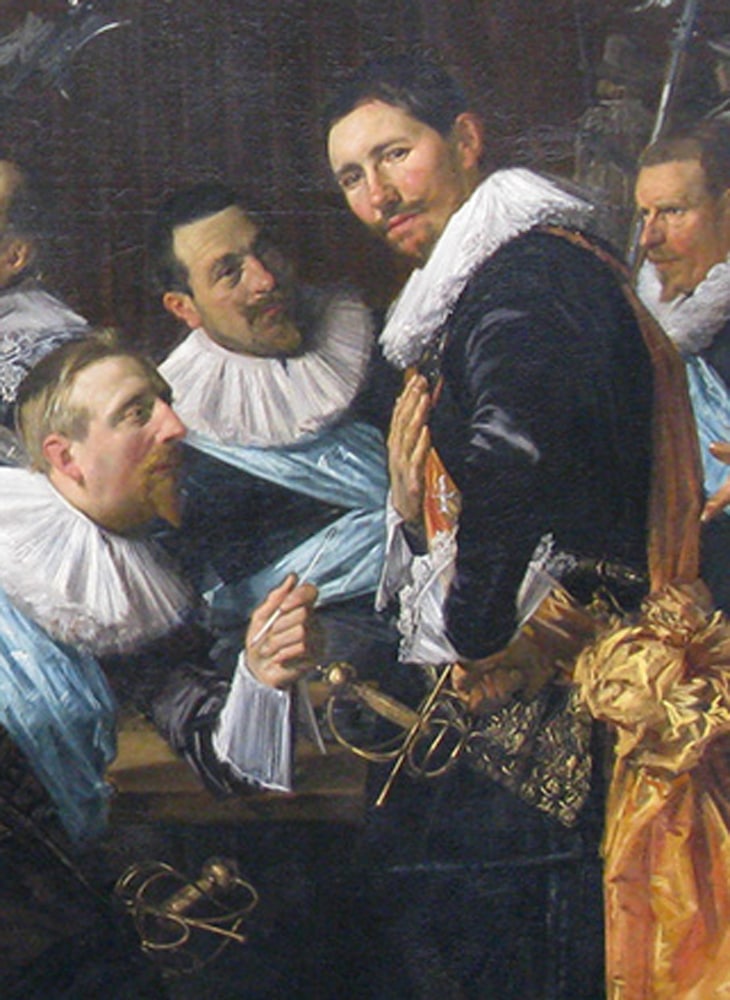
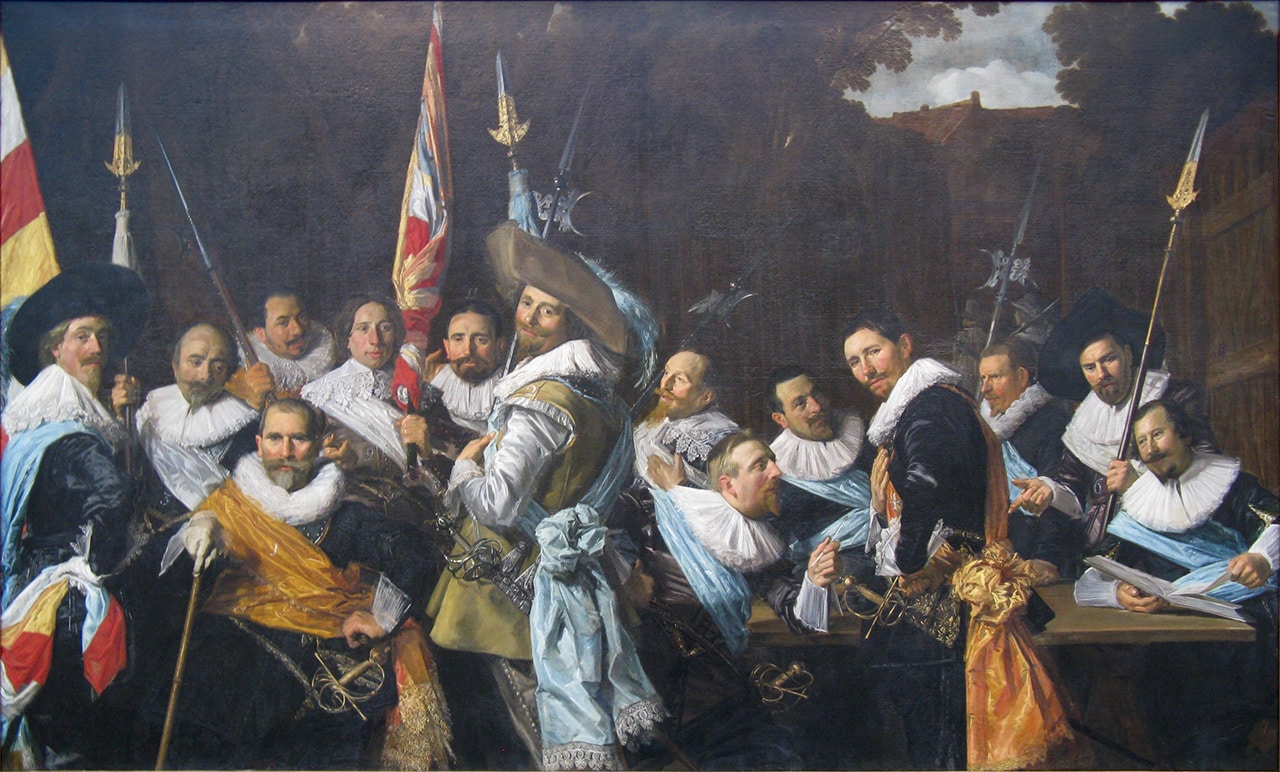
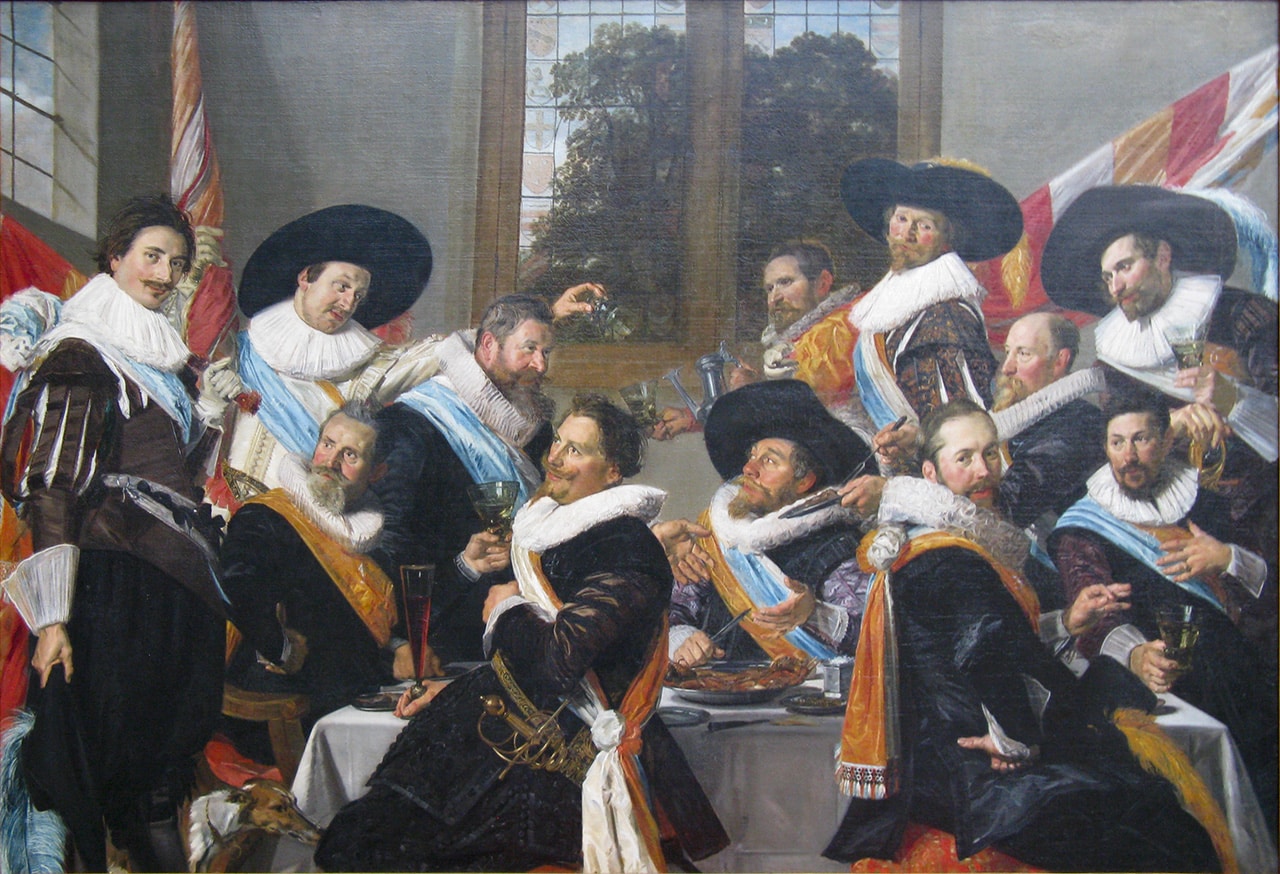
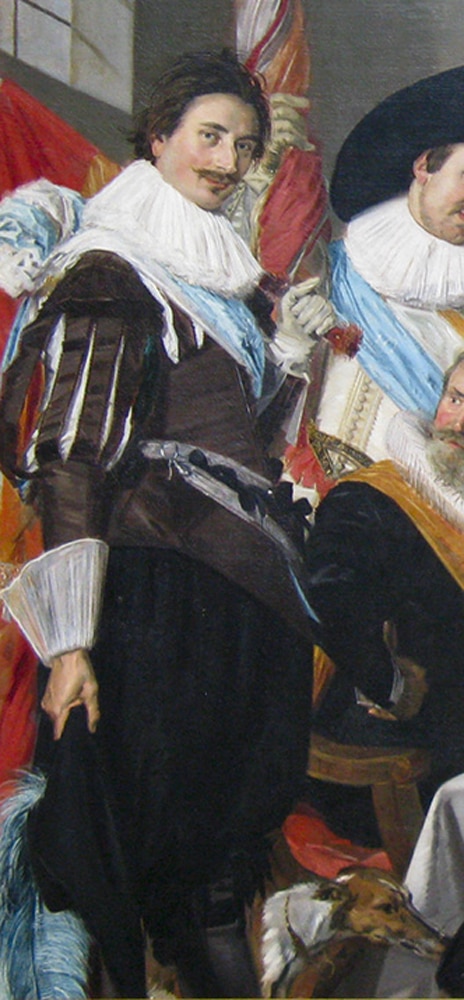
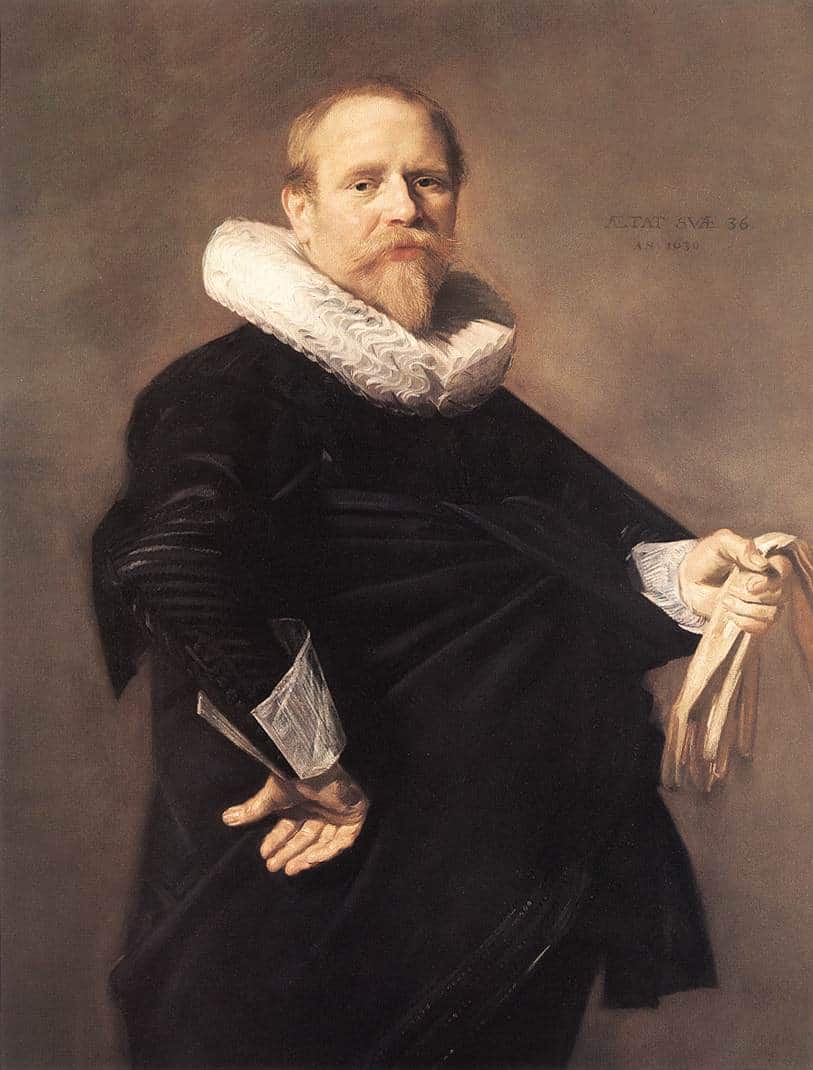
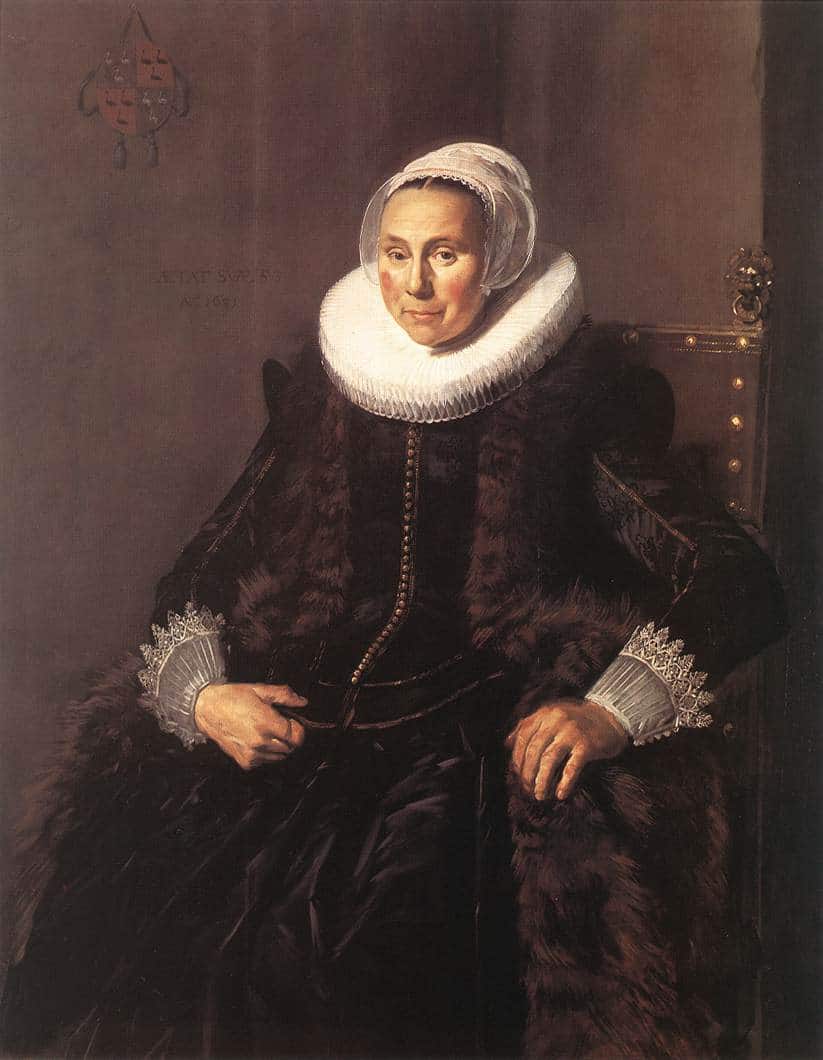
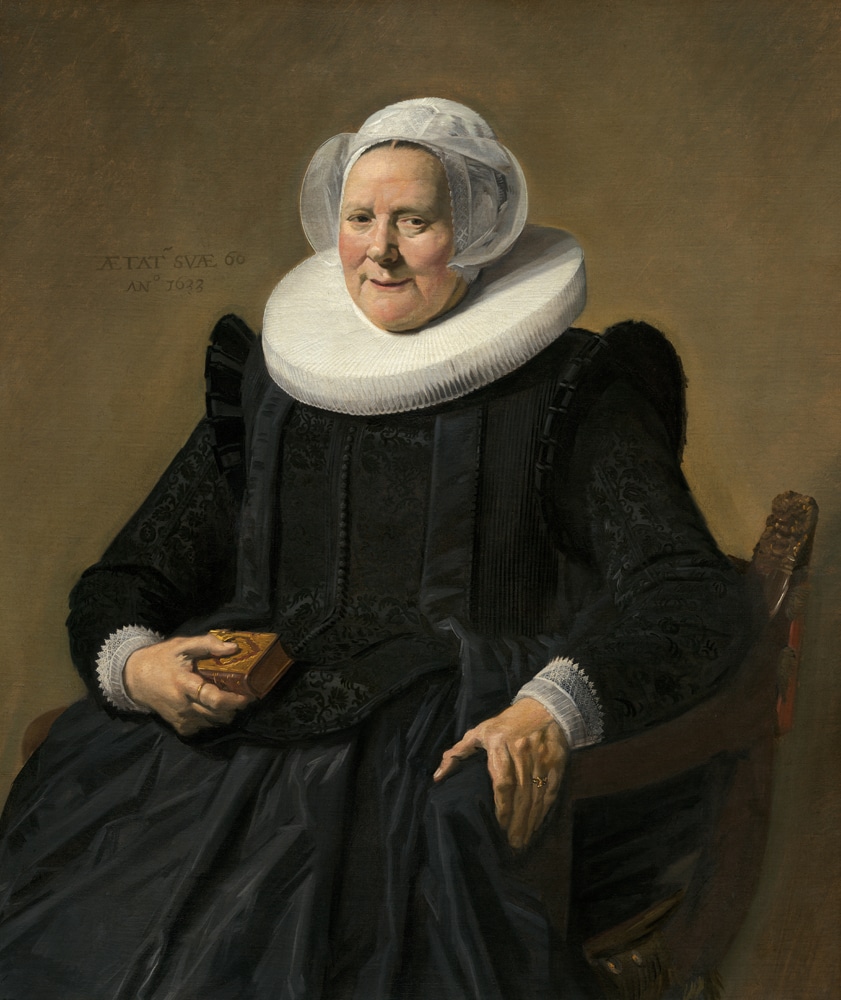
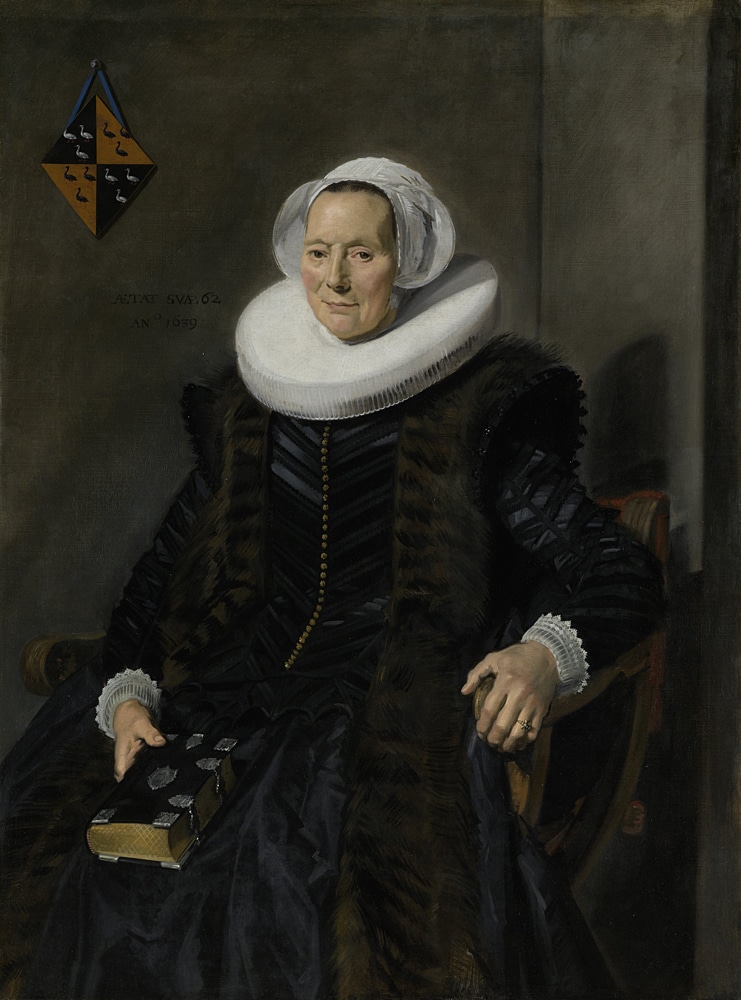
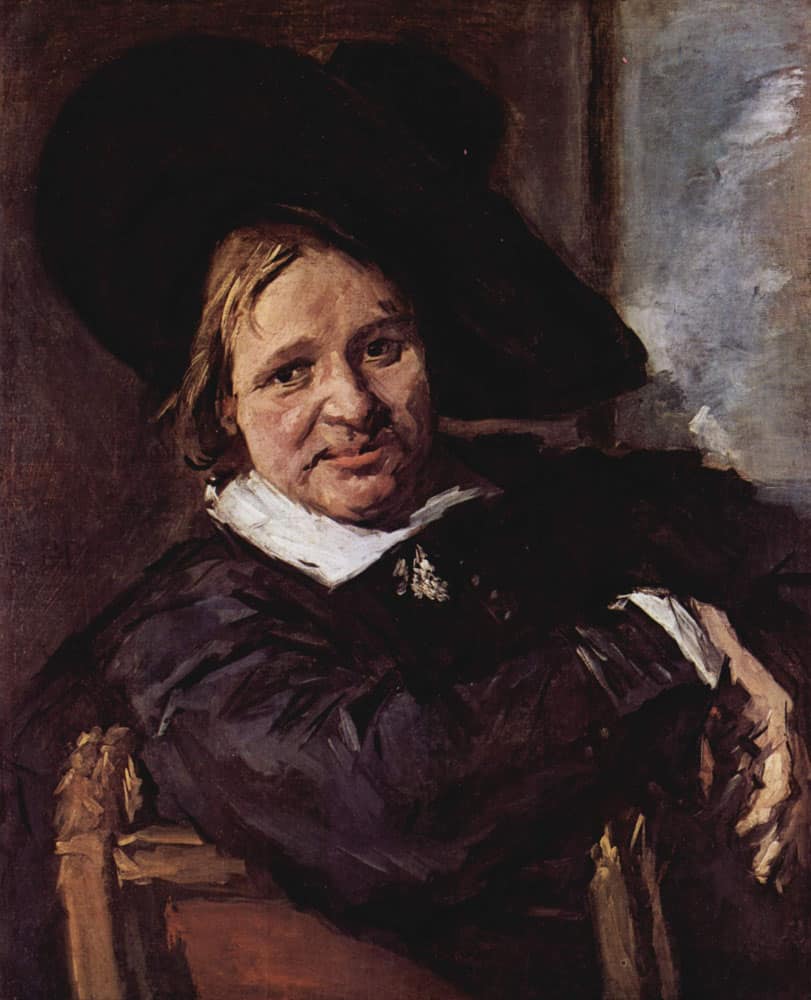
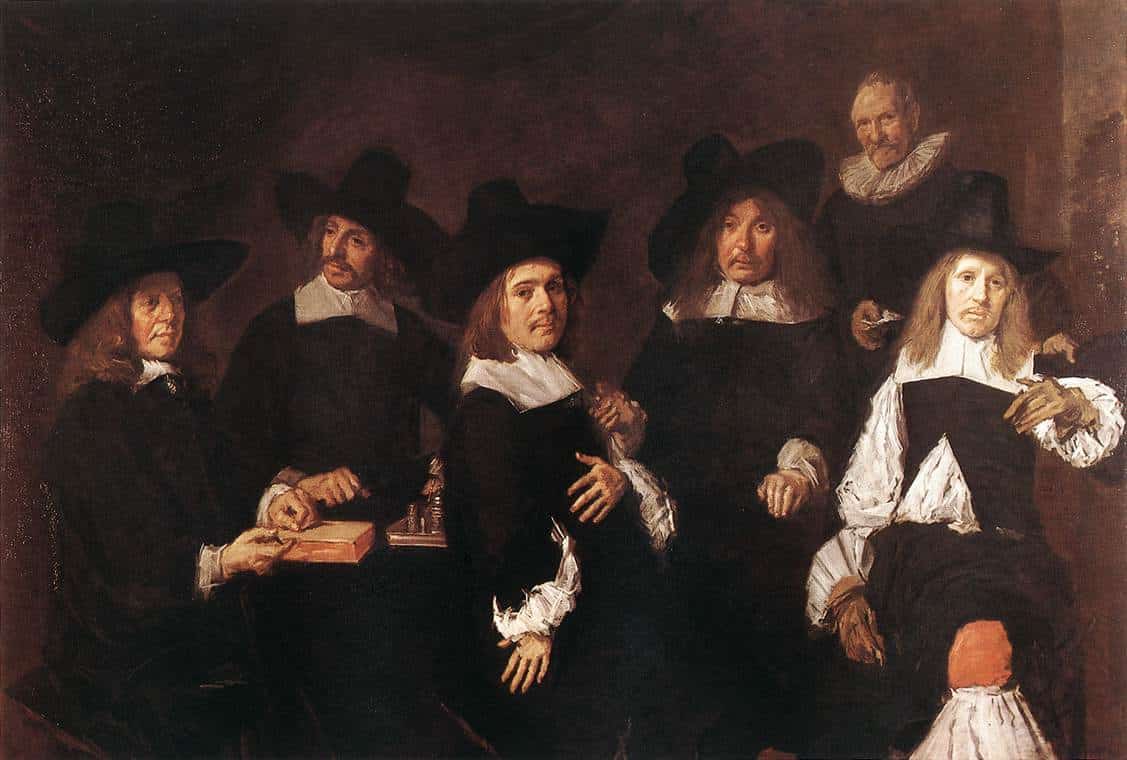
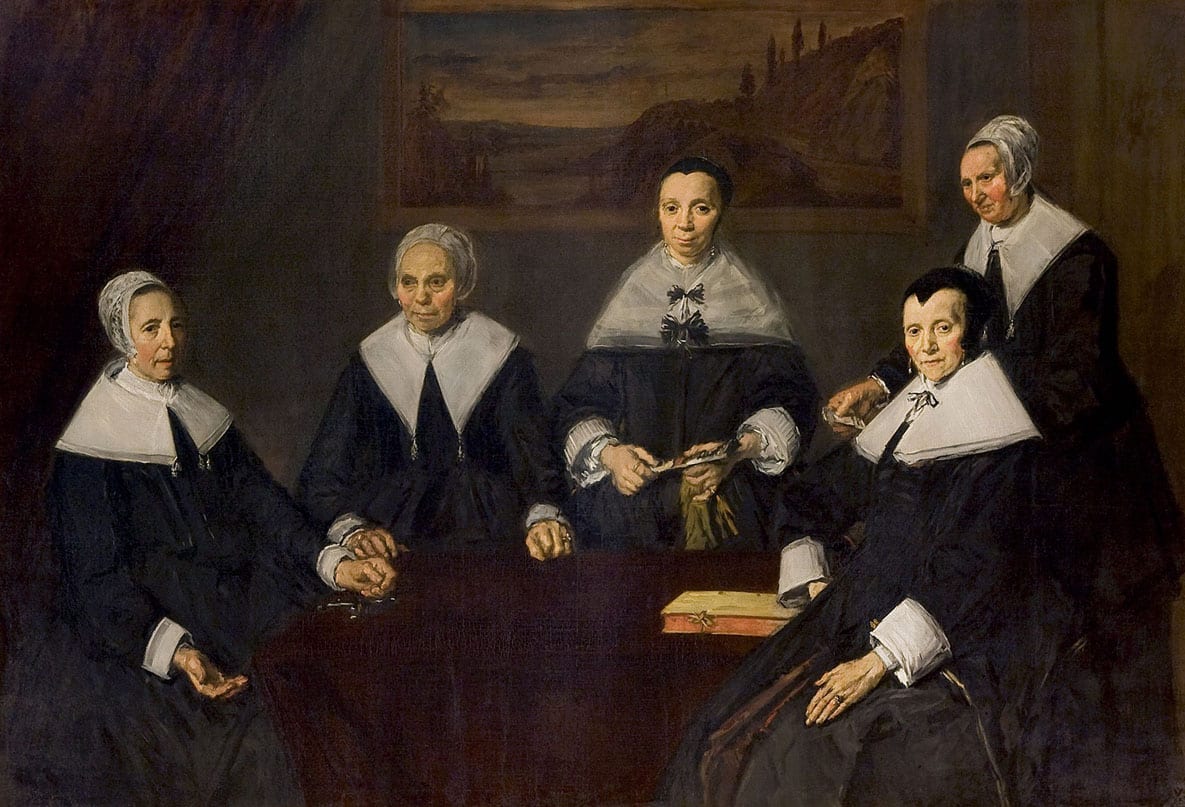
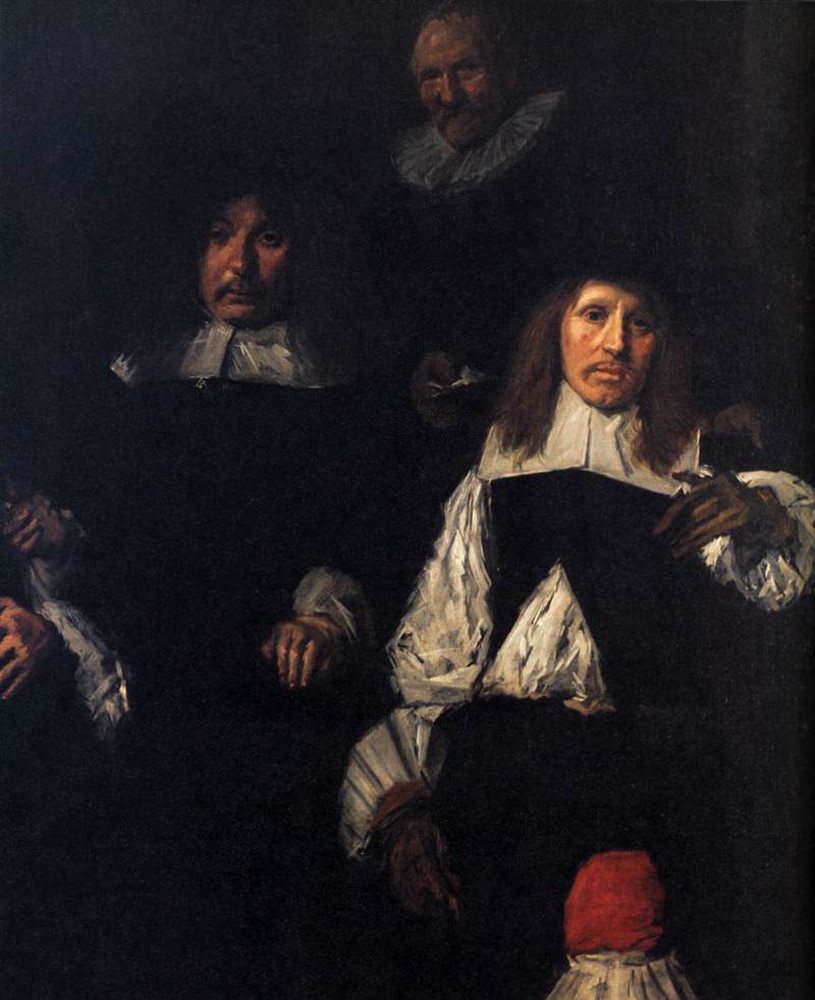
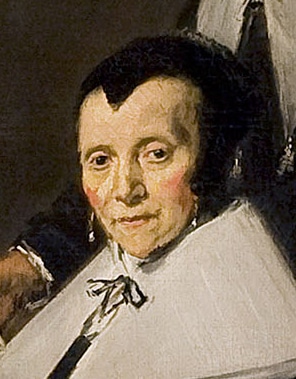
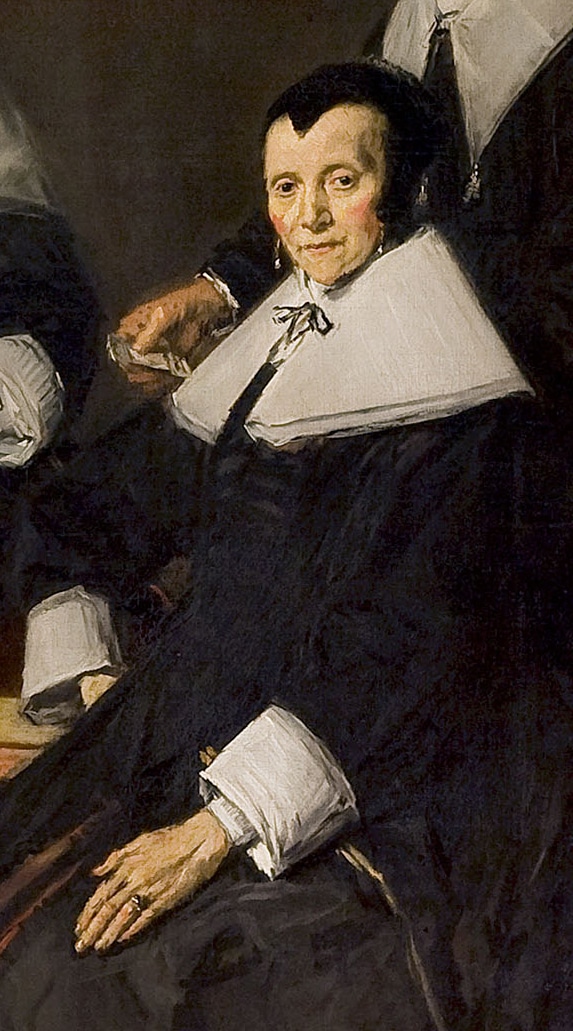
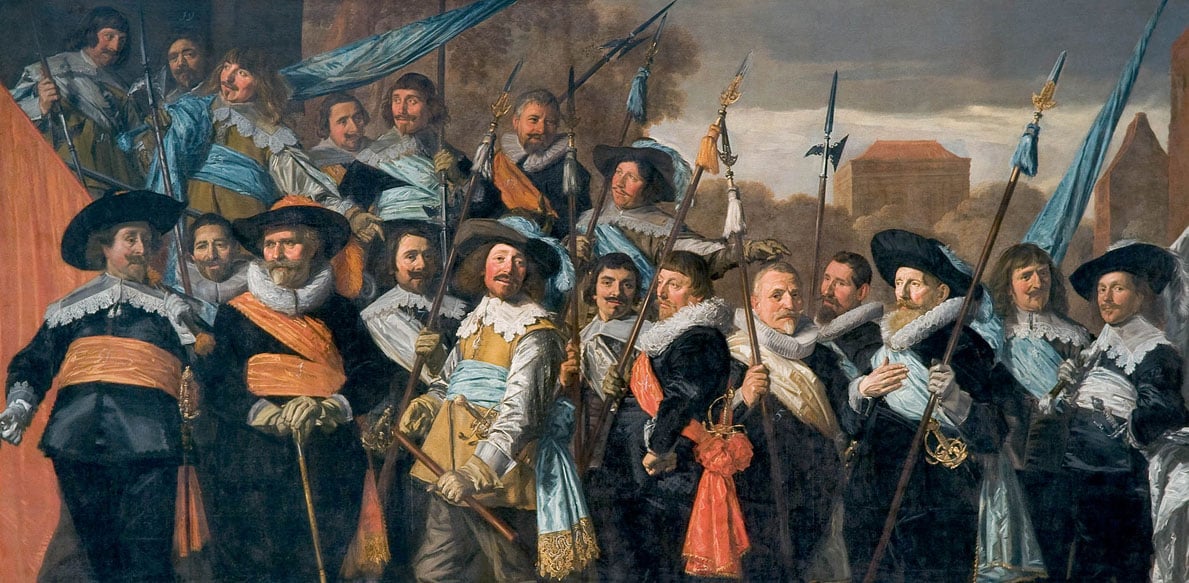
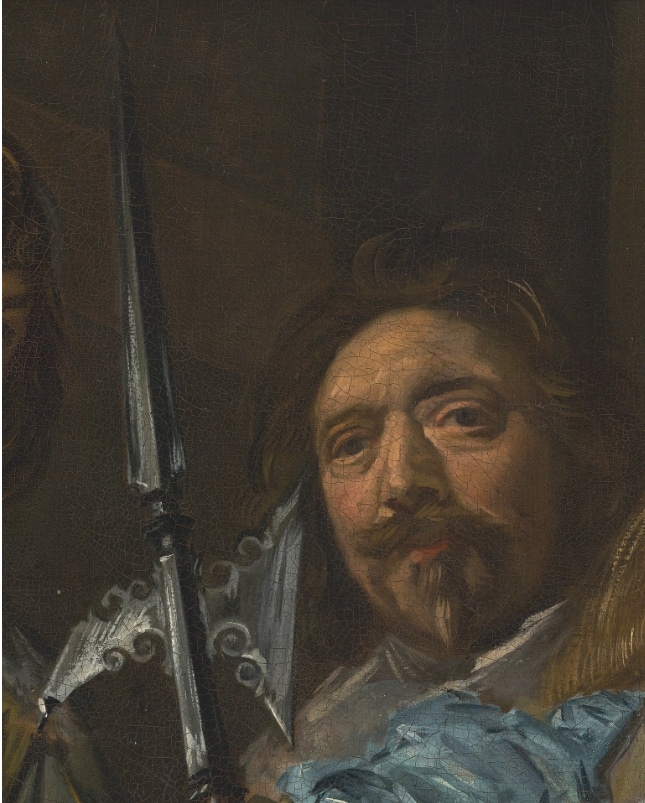
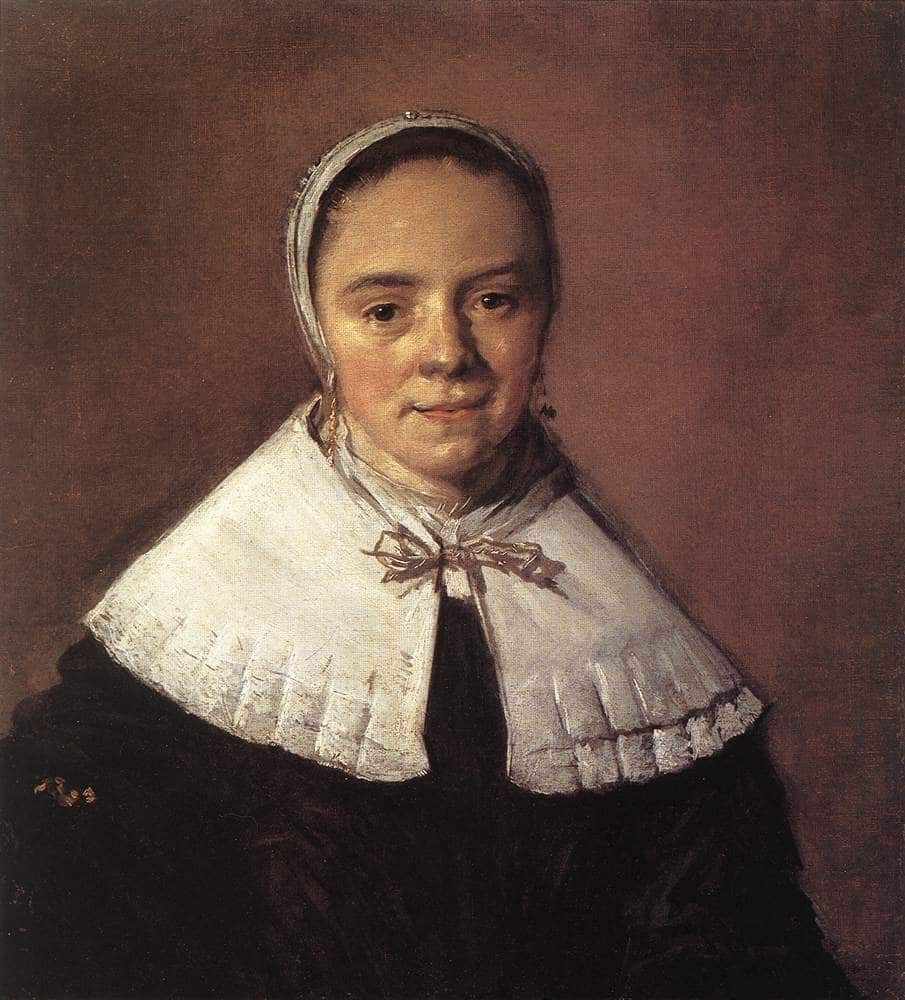

Such an enjoyable read. Thank you!
Have loved this, Terry. Apart from the insights into the art and techniques I have appreciated the language. So many observations shine poetically. I have learnt such a lot particularly about paying attention to detail. Thank you – a real treat. XXX
I just loved this Terry, like Hals’ paintings your writing is full of warmth and spirit! I can see the influence of Portrait of a Man in your own work, and from where Van Gogh drew his inspiration, albeit that the faces he paints are never so joyful nor so full of movement. But I do see melancholy despite the overall mood of compassion and tenderness, in The Oldmen’s Almshouse. While I have never seen this painting I view each of the figures as being isolated and distanced from each other compared to the earlier convivial Militia Groups and the two men you highlight evoke deep feelings of loneliness and sadness. You make me determined to get to The Netherlands once that which cannot be named, is vanquished with a vaccine.
Thank you, Jo.
The Regents and Regentesses seem to have provoked some more unfounded stories about Hals. It was traditionally asserted that he was taking revenge on the miserly management regime of the Almshouses by painting the subjects in an unflattering light, including one fellow as a drunk with his hat falling off. In fact, it was all the rage at the time to wear headgear at an extreme angle. However, although Hals was impoverished in old age, he was never an inmate of the Almshouse so that angle can be discounted. The feeling of isolation and melancholy that has been noted before now is more an effect of the darkening and ageing of the canvas that has obscured a much more integrated composition that brings the group to life. There is a watercolour copy by Wybrand Hendricks from 1800 that shows how much more light and detail Hals included in the original. (I can’t seem to paste it in here)
Certainly, they are very different from the bacchanalia of the militia pieces, but these were characteristically sober and dignified memorials to the great and the good. In any case, the patrons were happy enough with the Regents to go on and commission Hals to paint the Regentesses. Such a fiercely exacting and litigious lot would not have tolerated any impudence so I think it more likely that the two odd looking fellows that I highlighted may have had a condition of some kind and were, perhaps, wheeled out for the occasion. Something that we’ll never know.
What a fascinating and beautifully written introduction to the portraits of Franz Hals, Terry! I have seen some before but never brought to life like this. It makes me want to go to Haarlem, or failing that to Hull. An immensely benign view of his Republic, even of Malle Babbe with the owl on her shoulder … And indeed, the Boy holding a flute is an extraordinary inversion of observer-observed, it takes one aback. So many details in each portrait, bringing it alive… And behind them the smile of Catherina Hooft! The last Portrait of a Woman makes me think I must know her … Thanks so much.
This was such a pleasure. I’ve never paid much attention to Hals’s work, so this was an enlivening and uplifting Lockdown adventure. Your guidance and analysis carried me through the work and made me look at it, properly. I would probably have skipped past these in a gallery without the means or the will to understand and appreciate them – to read them. I particularly loved the images of the lower classes, the looseness of the technique and the vibrancy and humour depicted and conveyed, which is so joyful. I was so struck by the fact that most if those are depicted smiling. It seemed unusual, is it? Anyhow, here’s to Hals and thanks for the introduction to his work.